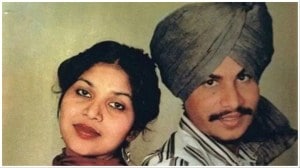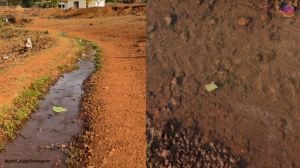- India
- International
Freedom Call
To commemorate Anand’s birth centenary in January next year, the iconic film will be screened as part of the 20th Kolkata International Film Festival on November 15.
 A scene from Neecha Nagar; Chetan Anand (Inset)
A scene from Neecha Nagar; Chetan Anand (Inset)
It was just a few years after the Quit India movement and a young Chetan Anand wanted to leave his mark on the freedom struggle. Son of a well-known advocate, he decided to contribute through the medium of cinema, through his 1946 film Neecha Nagar. In the film, residents of a lower-class community called Neecha Nagar become the metaphor for the struggle of living under British rule, by adhering to rules set by the upper-class residents of Ooncha Nagar.
To commemorate Anand’s birth centenary in January next year, the iconic film will be screened as part of the 20th Kolkata International Film Festival on November 15. “Since his family was involved in the freedom struggle, my father felt that films were a powerful tool to pass on the message of freedom to the people. When Lord Mountbatten watched Neecha Nagar, he loved it and encouraged my father to distribute it widely in India,” says director Ketan Anand, son of the late filmmaker. He points out, at a time of limited freedom of speech, the film made displeasure against the British evident through subtle references of its lead character wearing a Nehru cap and scenes showing spinning of the charkha.
The film also had several firsts to its credit. It was the the big break for actor Kamini Kaushal, who went on to become a fixture in many Manoj Kumar movies, and the first Indian movie to win the Palme d’Or or Golden Palm at the Cannes Film Festival in 1946. It also marked the debut of Pt. Ravi Shankar as a music director in film.
Besides the special screening, this edition of the Kolkata festival (November 10-17) will be introducing a competition category for women filmmakers.
Apr 26: Latest News
- 01
- 02
- 03
- 04
- 05








































